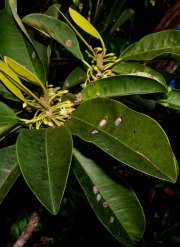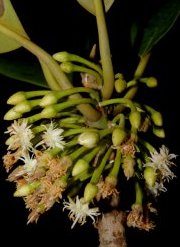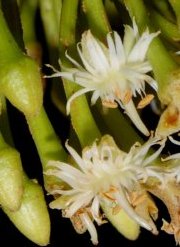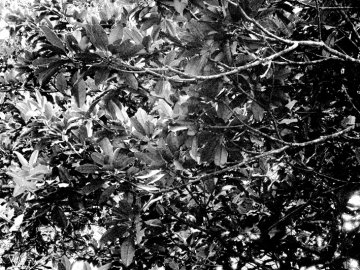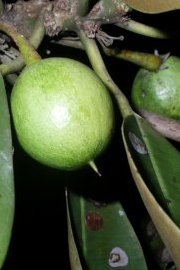 |
QUICK SEARCH
MO PROJECTS:
Africa
Asia/Pacific
Mesoamerica
North America
South America
General Taxonomy
Photo Essays
Training in Latin
America
MO RESEARCH:
Wm. L. Brown Center
Bryology
GIS
Graduate Studies
Research Experiences
for Undergraduates
Imaging Lab
Library
MBG Press
Publications
Climate Change
Catalog Fossil Plants
MO DATABASES:
W³MOST
Image Index
Rare Books
Angiosperm
Phylogeny
Res Botanica
All Databases
INFORMATION:
What's New?
People at MO
Visitor's Guide
Herbarium
Jobs & Fellowships
Symposium
Research Links
Site Map
Search
|
Draft Treatments | Guidelines | Checklist | Citing | Editors The Cutting EdgeVolume XIX, Number 1, January 2012News and Notes | Leaps and Bounds | Germane Literature | Season's Pick | Annotate your copy SEASON'S PICK: Manilkara spectabilis (Pittier) Standl. (Sapotaceae) gets the nod for this season's photo essay.
On 10 January, during an excursion to the Refugio Nacional de Vida Silvestre Gandoca-Manzanillo, Manual co-PI Nelson Zamora (INB) had the great good fortune to encounter and collect (#5623) flowering material of the locally endemic Manilkara spectabilis (Pittier) Standl. (Sapotaceae). The flowers of this sp. were previously known only from Henri Pittier’s 1899 type collection, and Nelson’s photos (featured here) are surely the first ever taken of same.
Although these photos of branches and young fruits—courtesy of the large digital archive at INB—were taken by former INB curator Daniel Solano at a different season and place (6 May 2008, Parque Cariari, Prov. Limón; D. Solano et al. 5539), we include them here for a more complete picture of the sp. At both localities, the substrate is coralline limestone, known to harbor populations of other interesting spp. [see The Cutting Edge 6(2): 1, Apr. 1999].
|
© 1995-2025 Missouri Botanical Garden, All Rights Reserved
4344 Shaw Blvd.
St. Louis, MO 63110
(314) 577-5100
Technical Support
